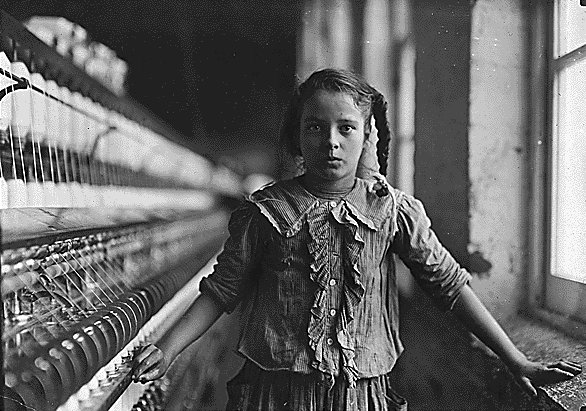Working Conditions and Class tensions
The working conditions in the early Industrial Age were in a word, awful. The working class had little to no political or economic power to use to improve their situation despite consisting of 75% of the society at the time in Britain. The working class was not only powerless but in a difficult situation, the enclosure movement had forced many small farmers to the cities to look for work. This resulted in high unemployment rates and desperate workers who would often willingly accept dangerous jobs and low pay as an alternative to begging on the streets. Skilled workers found themselves at a slight advantage as they could not be so easily replaced as unskilled workers, however the machine age would start to phase out some of these workers as well. For example, hand weavers talents and experience became useless because they could not compete with the efficiency of the new textile machines. And since the textile industries were so new at the end of the 18th century, there were initially no laws to regulate them. Desperate for work, the migrants to the new industrial towns had no bargaining power to demand higher wages, fairer work hours, or better working conditions. Worse still, since only wealthy people in Great Britain were eligible to vote, workers could not use the democratic political system to fight for rights and reforms.
For the first generation of workers—from the 1790s to the 1840s—working conditions were very tough, and sometimes tragic. Most laborers worked 10 to 14 hours a day, six days a week, with no paid vacation or holidays. Each industry had safety hazards too; the process of purifying iron, for example, demanded that workers toiled amidst temperatures as high as 130 degrees in the coolest part of the ironworks. Under such dangerous conditions, accidents on the job occurred regularly. A report commissioned by the British House of Commons in 1832 commented that “there are factories, no means few in number, nor confined to the smaller mills, in which serious accidents are continually occurring, and in which, notwithstanding, dangerous parts of the machinery are allowed to remain unfenced” (Sadler). The report added that workers were often “abandoned from the moment that an accident occurs; their wages are stopped, no medical attendance is provided, and whatever the extent of the injury, no compensation is afforded” (Sadler). As the Sadler report shows, injured workers would typically lose their jobs and also receive no financial compensation for their injury to pay for much needed health care.
Life in the factory was most challenging for the first generation of industrial workers who still remembered the slower and more flexible pace of country life. Factory employers demanded a complete change of pace and discipline from the village life. Workers could not wander over to chat with their neighbors or family as they would have done while working in the country. They could not return to the village during harvest time to help their families, unless they wanted to lose their jobs. Instead, they were no longer their own bosses; foremen and overseers supervised a new working culture to insure that workers’ actions were focused and efficient. A few workers were able to improve their lot by going into business for themselves or winning a job as a supervisor, but the majority saw very little social mobility.
Your Task:
Select one image displaying the working conditions from the 1750’s to the early 1900’s. The image can be a drawing or photograph. Analyze the photo and create a daily itinerary for the worker before you. In other words what is this person’s day like at their job. You should include their name (real or imagined), occupation (including a brief description), potential benefits or hazards, approximate pay, hours of the day and living conditions what not at work. The sources for this information are 1. Your analysis of the picture 2. Class notes and homework 3. The internet. Use the internet to help identify some of this information, and our class notes for the rest.
Enrichment
Using the original photograph or drawing as inspiration, take a modern day image of someone in a similar context at the times and create an itinerary for their day by interviewing them. The parallels between the old and modern photo can be but are not limited too similar age, background, region, occupation, gender, social class etc. Write a brief paragraph highlighting your findings.
Example of Photographs:
These two picture represent two very different occupations for women approximately the same age. The girl on the left made clothing and textiles for a living and was probably located in an urban area. The girl on the left is a modern worker who does not manufacture the clothes but sells them to customers at a store. In this case she is probably in a mall or a similar suburban location. Despite the similar age, gender and field of work this two girls clearly have had two very different experiences with work.

